Around 1740, the Dower House, in the Market Place, was adapted for use as a coaching inn. At that time, it was Thirsk’s only coaching inn and had the monopoly for many years. The London, Edinburgh, Newcastle, Leeds and Darlington coaches all used the Three Tuns Hotel for bed and breakfast. The original mangers, stalls and hay lofts for the horses may still be seen at the yard, behind the pub.
A print and text about Adam Carlisle Bamlett.
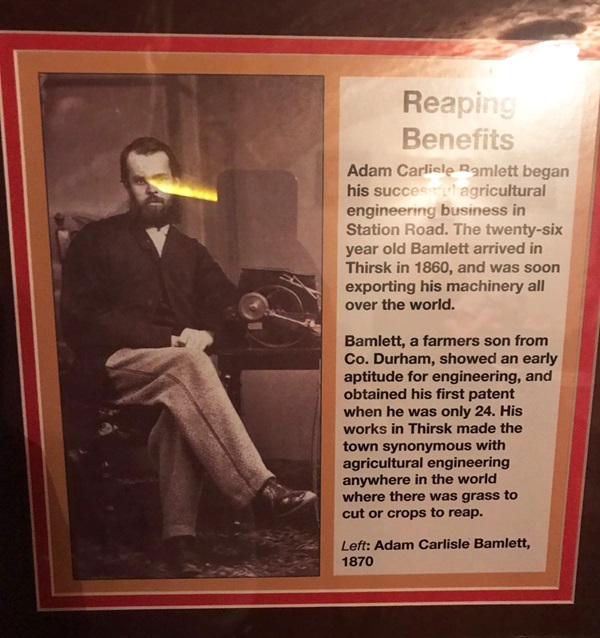
The text reads: Adam Carlisle Bamlett began his successful agricultural engineering business in Station Road. The twenty-six year old Bamlett arrived in Thirsk in 1860, and was soon exporting his machinery all over the world.
Bamlett, a farmer’s son from Co. Durham, showed an early aptitude for engineering, and obtained his first patent when he was only 24. His works in Thirsk made the town synonymous with agricultural engineering anywhere in the world where there was grass to cut or crops to reap.
Left: Adam Carlisle Bamlett, 1870.
Photographs and text about Alf Wright.

The text reads: Until the 1940s, The World of James Herriot visitor centre, on Kirkgate, was the residence of various local doctors. It was then taken over by Donald Sinclair as his veterinary practice and late made famous by his partner Alf Wight.
Alf moved to Thirsk in 1940, and the following year married Joan Danbury, in St Mary’s Parish Church. He lived in the town for 55 years, until his death in 1995. Alf often popped into The Three Tuns, but it was his experiences as a vet that made him famous.
Using the pen name James Herriot, Alf took up writing at the age of fifty. If Only They Could Talk was published in 1969. Re-issued soon after as All Creatures Great and Small, the book was an overnight success.
Above left: Alf in the garden of his home at 23 Kirkgate
Above right: Alf’s car outside the surgery in Kirkgate.
Prints and text about William Wordsworth.
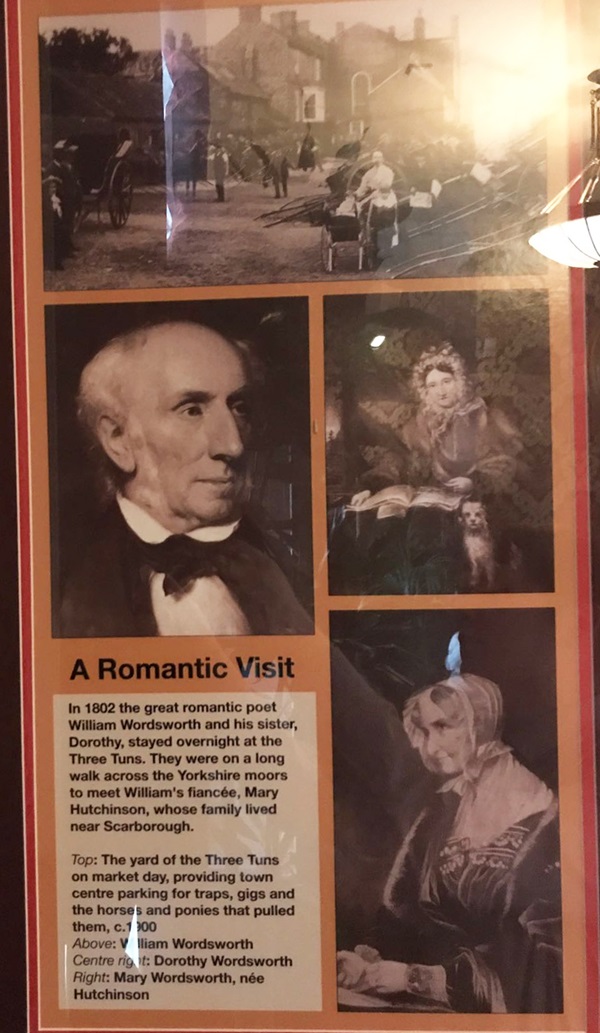
The text reads: In 1802 the great romantic poet William Wordsworth and his sister, Dorothy, stayed overnight at the Three Tuns. They were on a long walk across the Yorkshire moors to meet William’s fiancée, Mary Hutchinson, whose family lived near Scarborough.
Top: The yard of the Three Tuns on market day, providing town centre parking for traps, gigs and the horses and ponies that pulled them, c1900
Above: William Wordsworth
Centre right: Dorothy Wordsworth
Right: Mary Wordsworth, née Hutchinson.
A photograph and text about George Freeman.
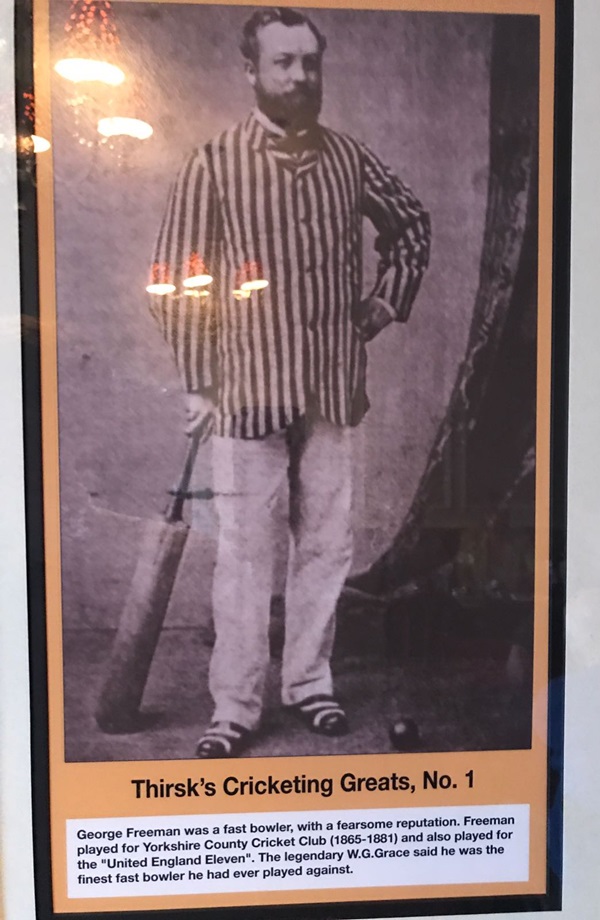
The text reads: George Freeman was a fast bowler, with a fearsome reputation. Freeman played for Yorkshire County Cricket Club (1865-81) and also played for the “United England Eleven”. The legendary WG Grace said he was the finest fast bowler he had ever played against.
Photographs and text about the Fountains Abbey.

The text reads: The parish church of St Mary (left), and nearby Fountains Abbey, are linked by the church’s oldest bell, which came from the Abbey when all the monastic estates in England were taken over, and sold off, by King Henry VIII in the late 1530s.
Left: The parish church, when the mill dam ran past it
Above: The ruins of Fountains Abbey
A photograph, illustration and text about Thirsk’s Market Place.
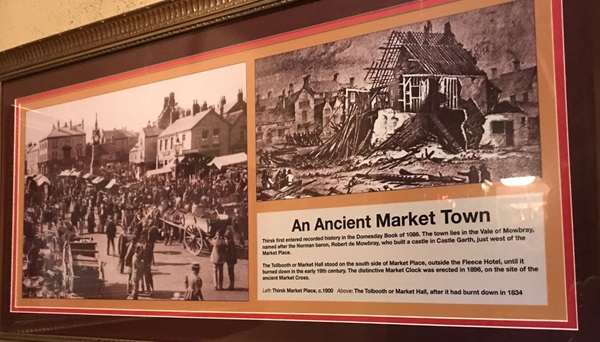
The text reads: Thirsk first entered recorded history in Domesday Book of 1086. The town lies in the Vale of Mowbray, named after the Norman baron, Robert de Mowbray, who built a castle in Castle Garth, just west of the Market Place.
The Tollbooth or Market Hall stood on the south side of Market Place, outside the Fleece Hotel, until it burned down in the early 19th century. The distinctive Market Clock was erected in 1896, on the site of the ancient Market Cross.
Left: Thirsk Market Place, c1900
Above: The Tollbooth or Market Hall, after it had burnt down in 1834.
A sculpture entitled The Three Tuns by Andrew Kay.

Mild steer bar sculpture-the horse representing the history of this former Coaching Inn, jumping through 3 hoops or “Tuns”.
External photograph of the building – main entrance.
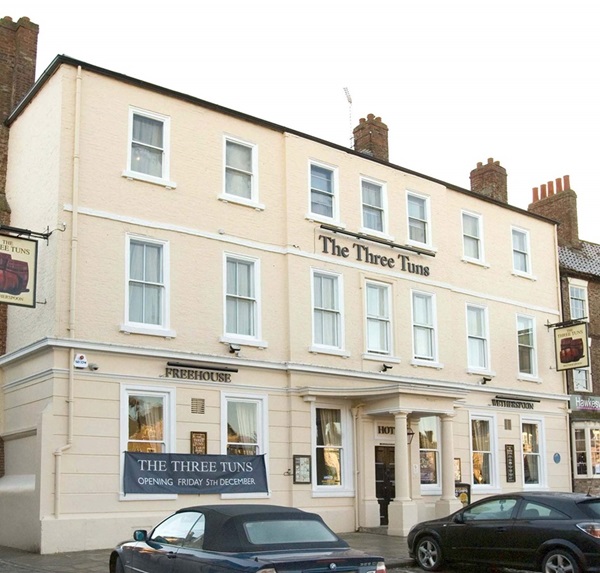
Extract from Wetherspoon News Summer 2017.

If you have information on the history of this pub, then we’d like you to share it with us. Please e-mail all information to: pubhistories@jdwetherspoon.co.uk